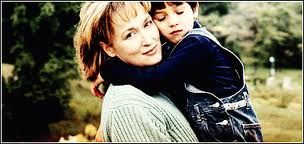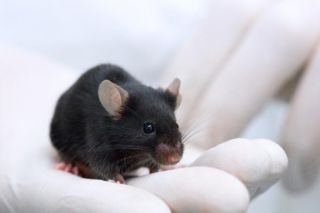Jim Abrahams witnessed his son Charlie, who had childhood epilepsy, undergo frightening seizures. The boy would convulse and lose consciousness. Medications didn't help. As his seizures continued, his cognitive abilities slowly deteriorated. Jim, who wasn't a medical doctor, decided to start investigating alternative treatments. After days in the library looking through books and medical journals, he found a book on childhood epilepsy written by Dr. John Freeman, the director of the Pediatric Epilepsy Center at Johns Hopkins Hospital. The book described that a diet that mimics the metabolism of starvation by cutting most dietary sources of carbohydrates and proteins could in some cases cure drug-resistant childhood epilepsy.
Ignoring the warnings of the staff at the boy's hospital, Jim transferred his son to the epilepsy center in Maryland, and Charlie was started on the diet. The young boy immediately showed improvements in his condition, and a couple of years later he became seizure free. Even the mental setback turned out to be reversible.

After discovering the diet Jim Abrahams created the Charlie Foundation, whose main mission is to promote the seizure diet as an alternative treatment of epilepsy. He also produced and directed the 1997 movie First Do No Harm, which stars Meryl Streep as the parent who saves her epileptic son from mental retardation when traditional epilepsy drugs fail to work.
Despite the efforts of Jim Abrahams, the Hopkins dietary treatment of children who fail to respond to more traditional medical treatment is only slowly gaining traction among physicians around the world.
The diet, which is also known as the ketogenic diet, is based on an ancient treatment for epileptic seizures. Ancient Greek physicians discovered that starvation could reduce seizures and sometimes cure them. Starvation cannot be maintained for long without serious health consequences. So, while starvation can have positive effects on seizures, its success rate is limited. Mayo Clinic's R. M. Wilder developed the ketogenic diet in the 1920s as an alternative to the starvation approach.

The diet, which is similar to the more recent and better known Atkins diet, mimics the metabolism of starvation but provides all the calories needed for the afflicted to maintain her weight. Wilder's original version of the ketogenic diet consisted of 10 to 15 g of carbs, 1 g protein per kilogram body weight and fat for the rest. Johns Hopkins Hospital recommends keeping a ratio of 4 parts fat to 1 part protein and carbohydrates combined. Before starting the diet, the child must fast for one to two days to use up her resources of glycogen, the stored form of glucose. The child is monitored in the hospital for a few days and can then return home to continue the diet.
But why does a diet low in carbohydrates and protein and high in fat help cure epilepsy? The short answer is that the ketogenic diet stabilizes the brain by making it switch from using glucose as its main energy source to using a byproduct from fat metabolism. The stabilization can cure epilepsy by slowing rapid firings of neurons in the brain. Brain seizures begin when a neuron or a small group of neurons get overexcited and the excitement spreads to other areas of the brain. In a grand-mal seizure, the whole brain is in a state of over-excitement. This sends random messages to the body and can result in convulsions and a loss of consciousness.
In starvation or the starvation-like mode that is induced by severely restricting dietary sources of carbohydrates and protein, the body runs out of glucose—the building blocks of carbohydrates. Excess dietary protein can convert into glucose. But if the diet does not supply significant amounts of protein, the only potential source of protein is the body’s own muscle and connective tissue. The body, however, is protective of its protein-rich tissue and only breaks it down for energy use when it’s absolutely necessary. Before turning to protein-rich tissue as a source of fuel, the body primarily burns fat. Fat cannot convert into glucose. So, when protein and glucose are limited, the brain must use a different energy source. Neither protein building blocks nor fatty acids can cross over from the blood to the brain. So, the brain cannot use these molecules as a fuel. It can, however, use ketone bodies, a byproduct from fat metabolism, as a source of energy.
It is still an open question exactly how switching from glucose to ketone body metabolism prevents seizures. Until recently the leading explanation was that ketone bodies stabilize brain cells by changing their internal structure. Ketone bodies are more efficient as a brain fuel. So, metabolizing them requires more cell engines, or mitochondria. The increase in mitochondria, it was thought, stabilizes neurons and makes them less likely to enter an excitation mode, thus reducing the likelihood of seizures.

A recent study at Johns Hopkins Hospital, however, suggests that starvation and the ketogenic diet may protect the brain in different ways. The researchers conducted a study of epileptic mice that were following either a fasting regimen or a high-fat diet. The mice were exposed to two seizure-inducers: electric brain stimulation or stimulation with the chemical kainic acid. The starving mice tolerated the chemical stimulant better than the electric stimulant. The mice on the ketogenic diet responded the other way around: they tolerated the electricity better than the chemical. Though the underlying differences in mechanism are not yet known, the study suggests that fasting and starvation prevent seizures in different ways.
After the initial experimentation with mice, the researchers tested a combination of the ketogenic diet and fasting on six pediatric patients who had been on the ketogenic diet but hadn’t fully recovered from epilepsy. Four of the six patients had a significant reduction in seizures on the partial starvation diet. The combination approach is highly promising. It may offer a cure for the small remainder of drug-resistant epileptic patients who don't respond to the original version of the ketogenic diet.




